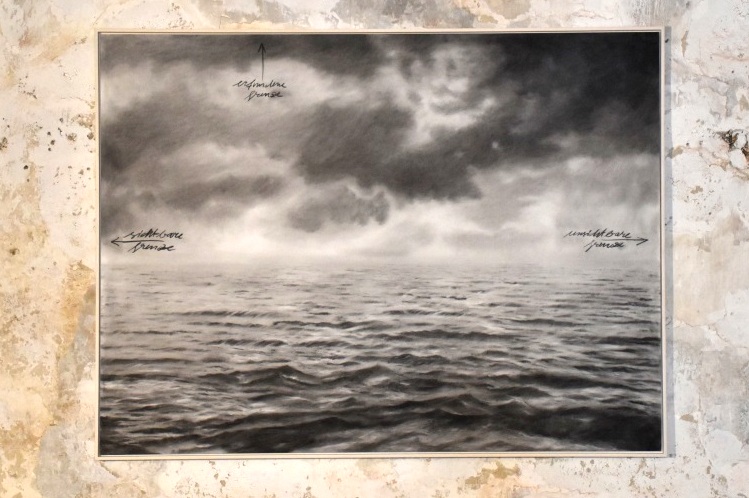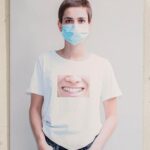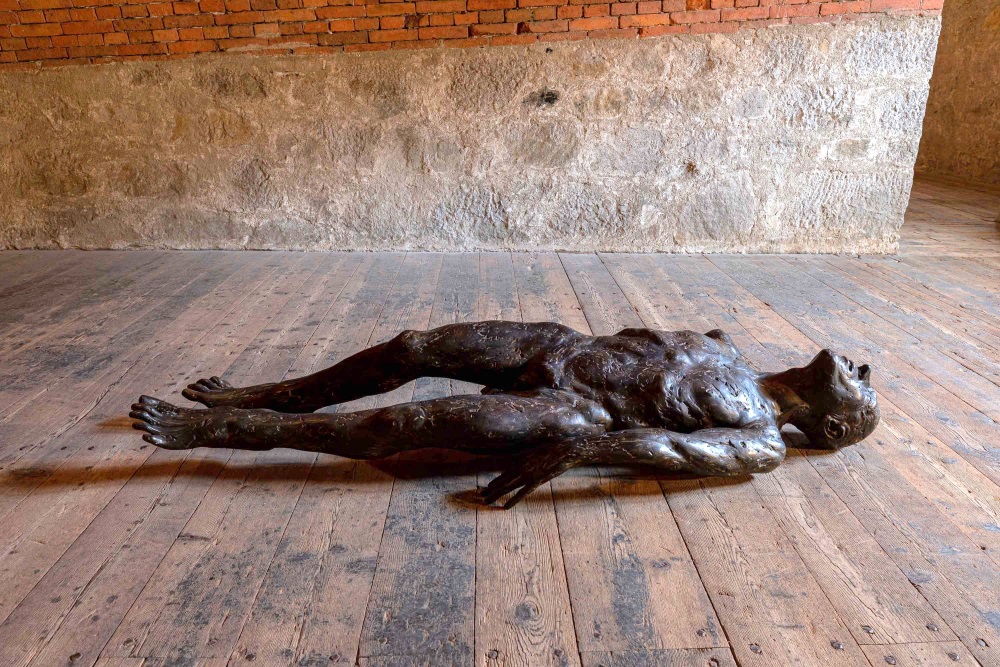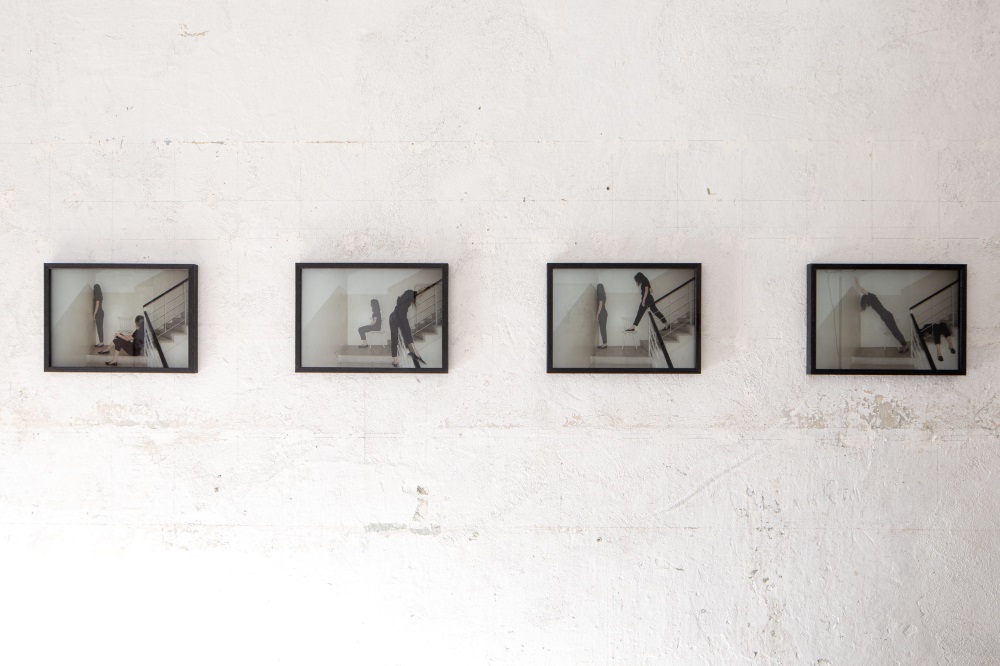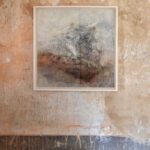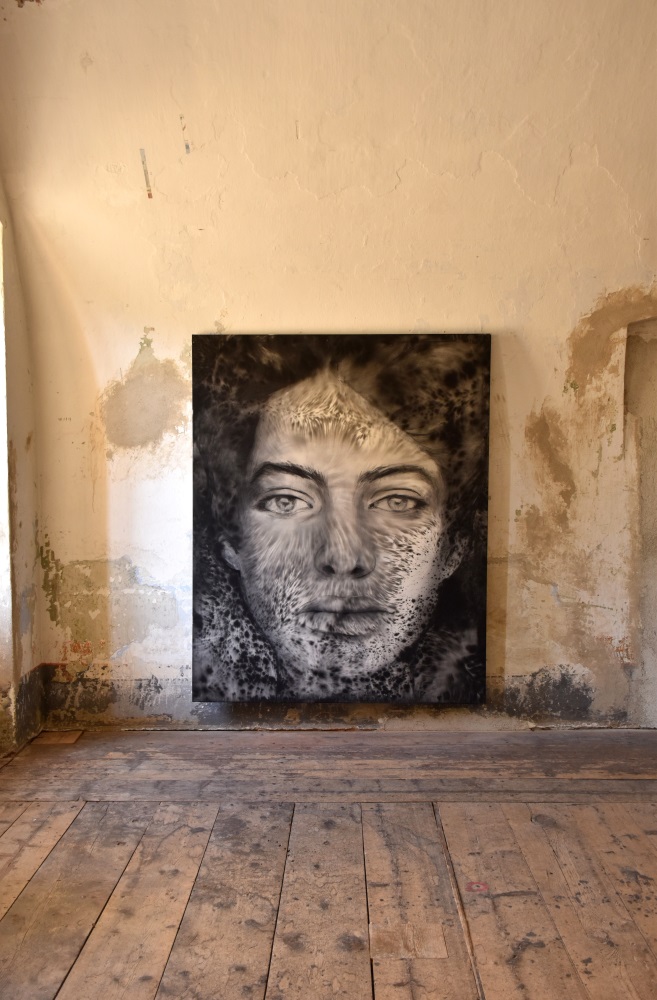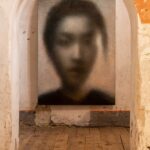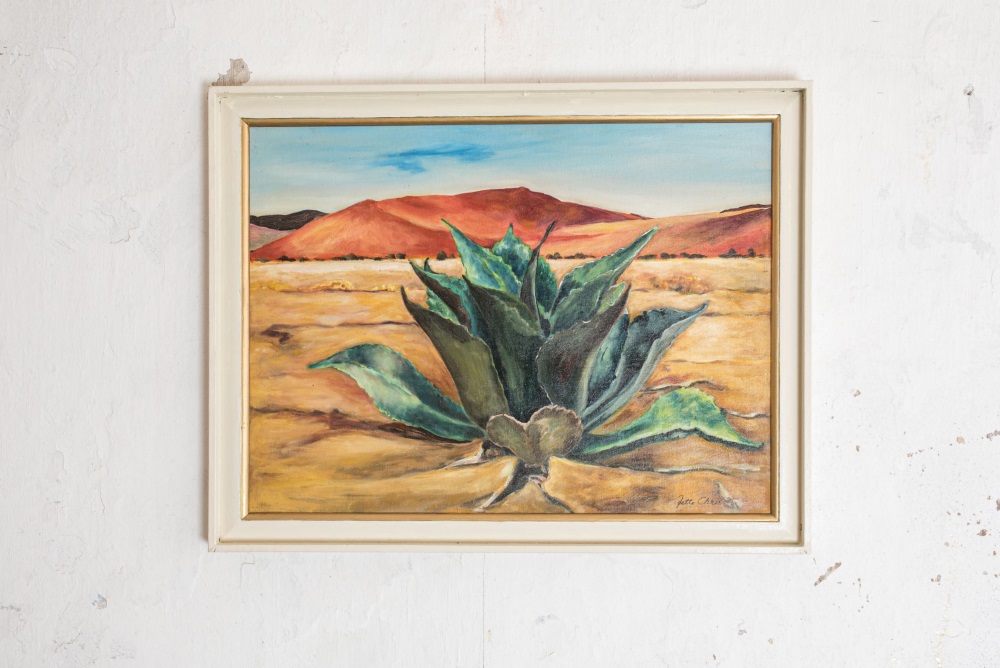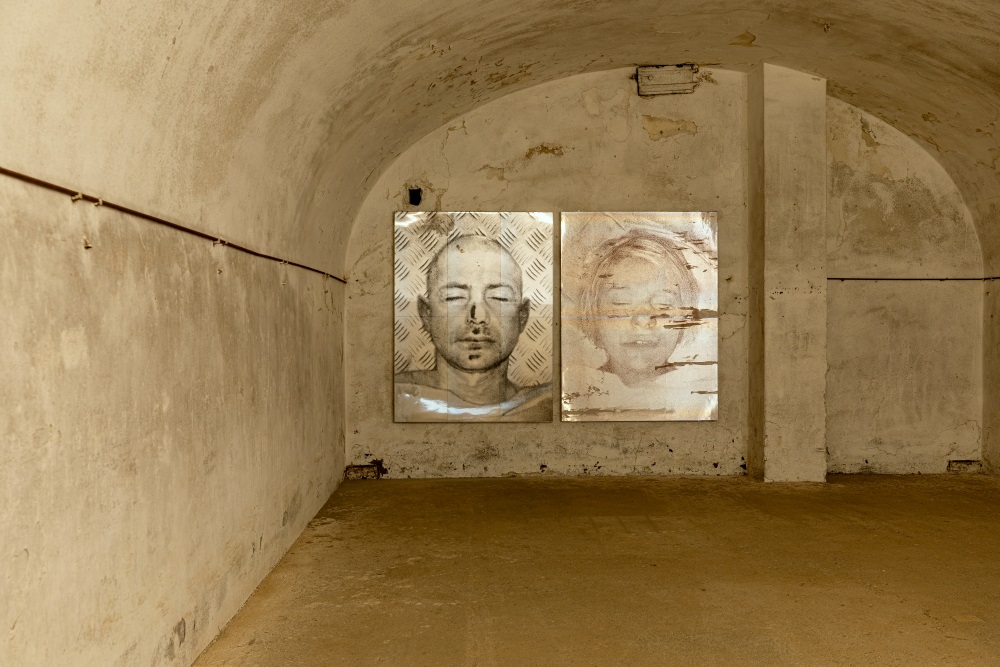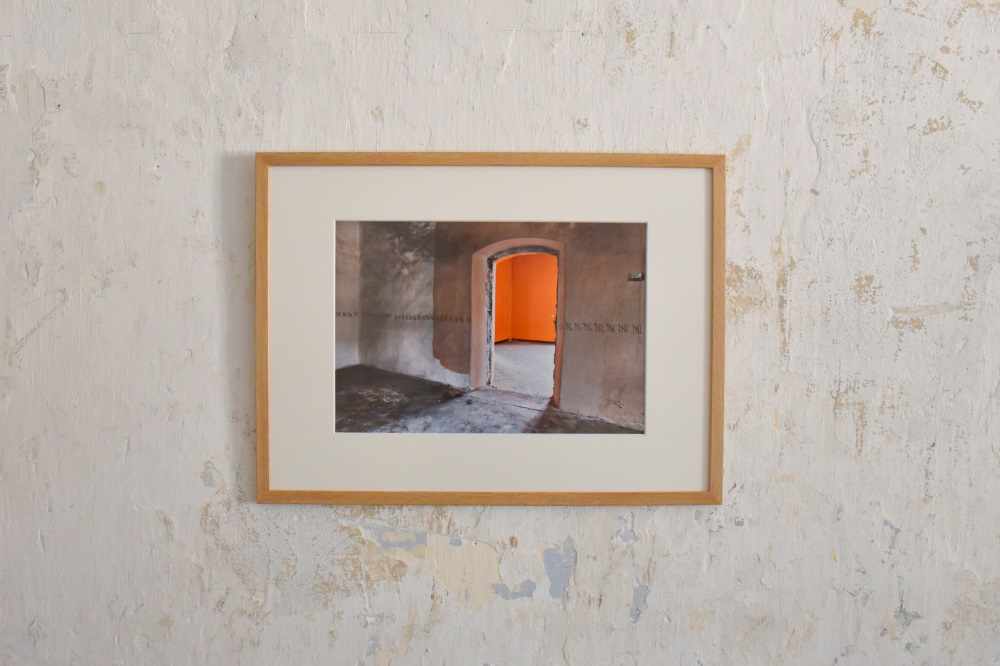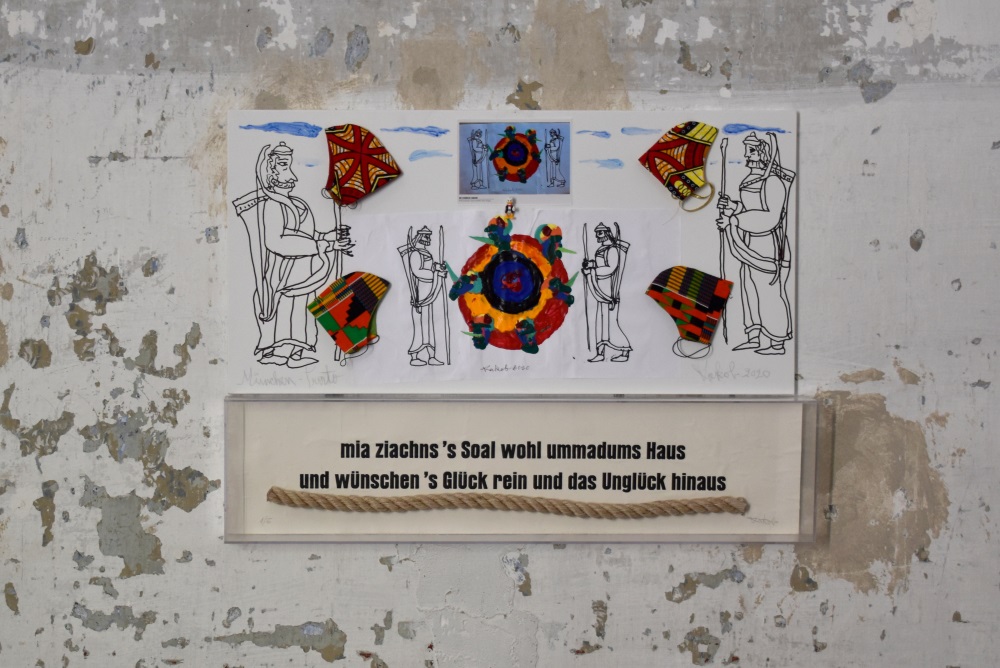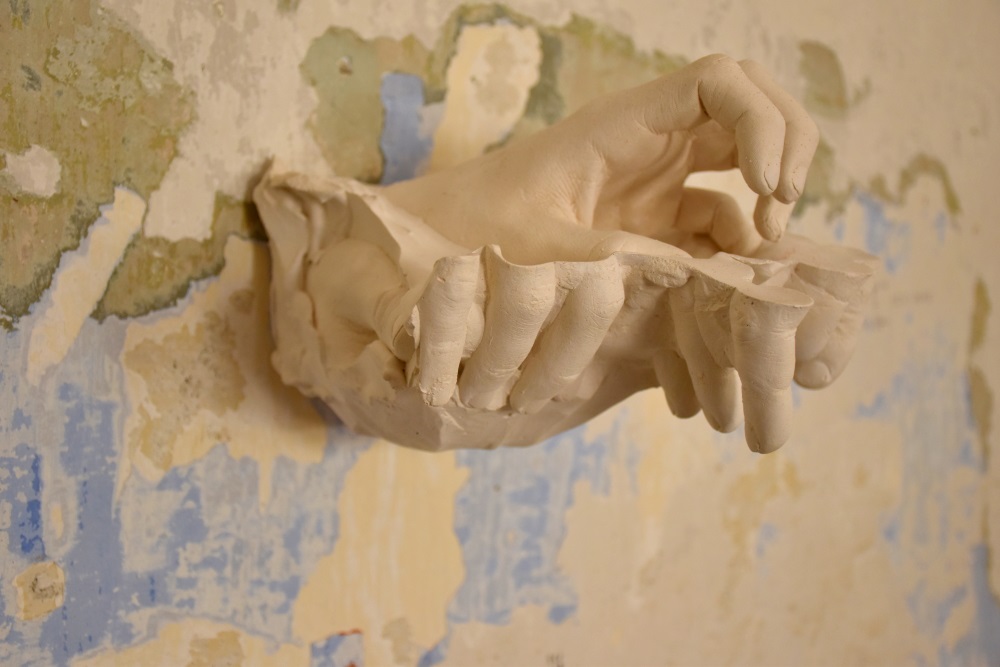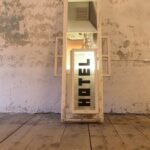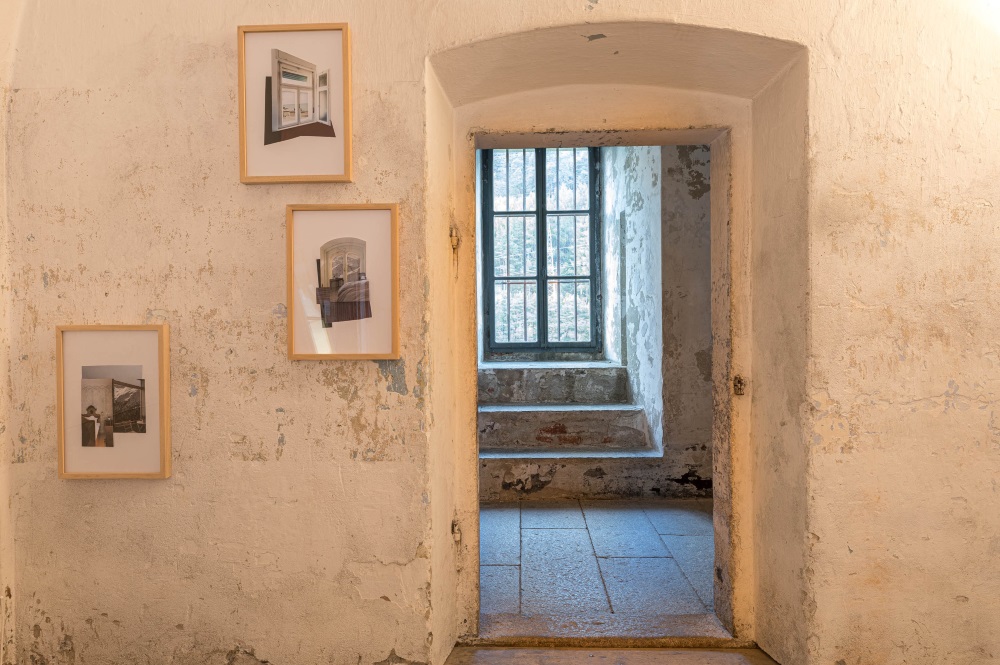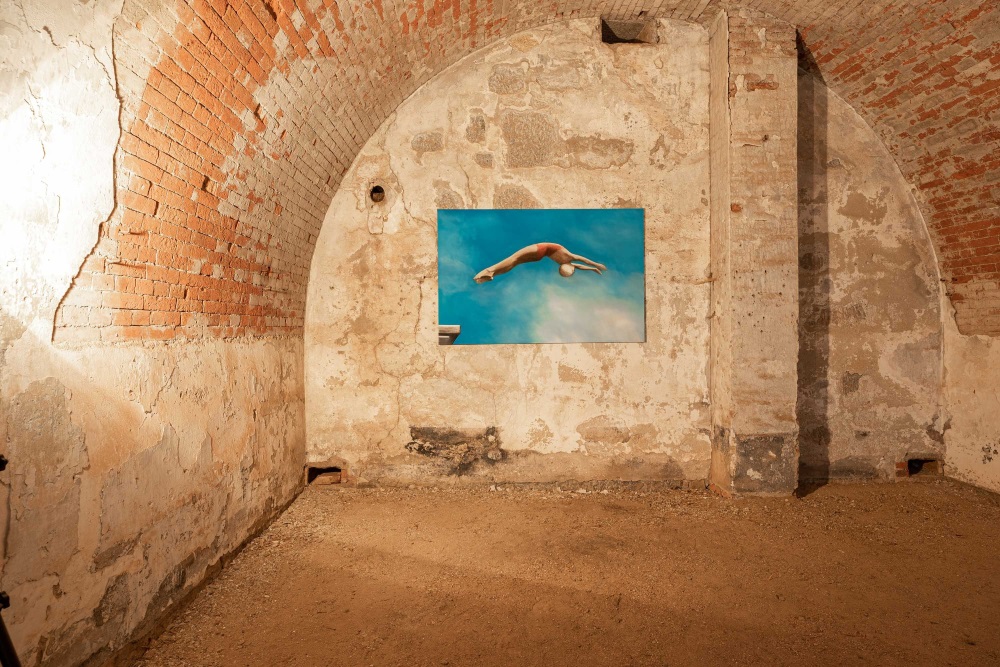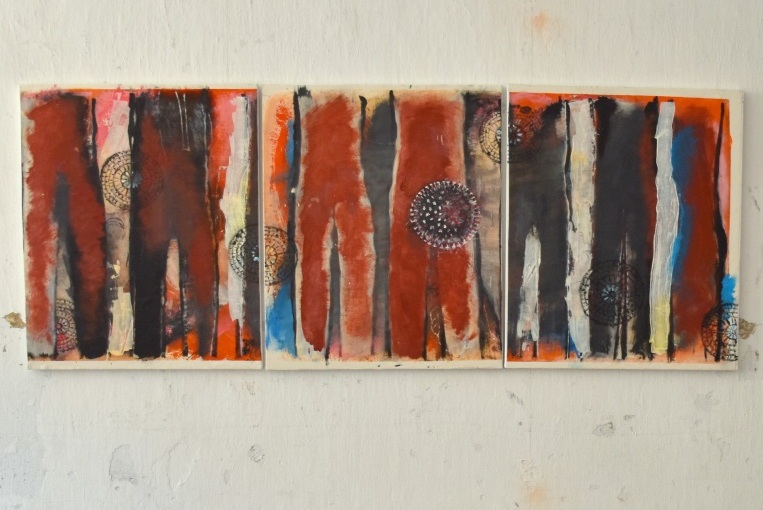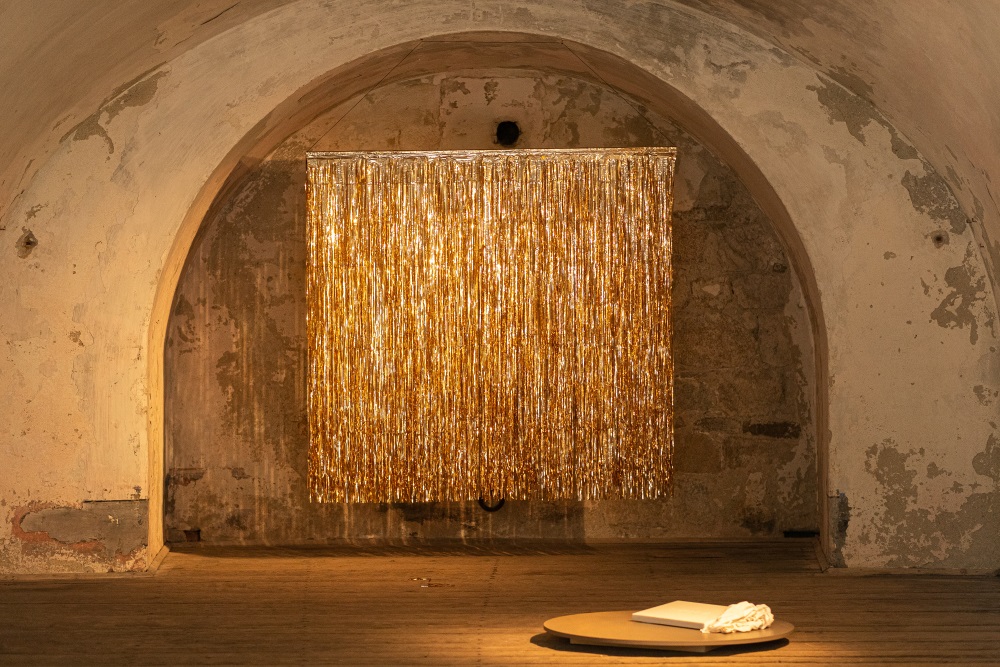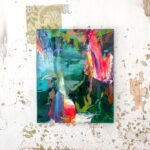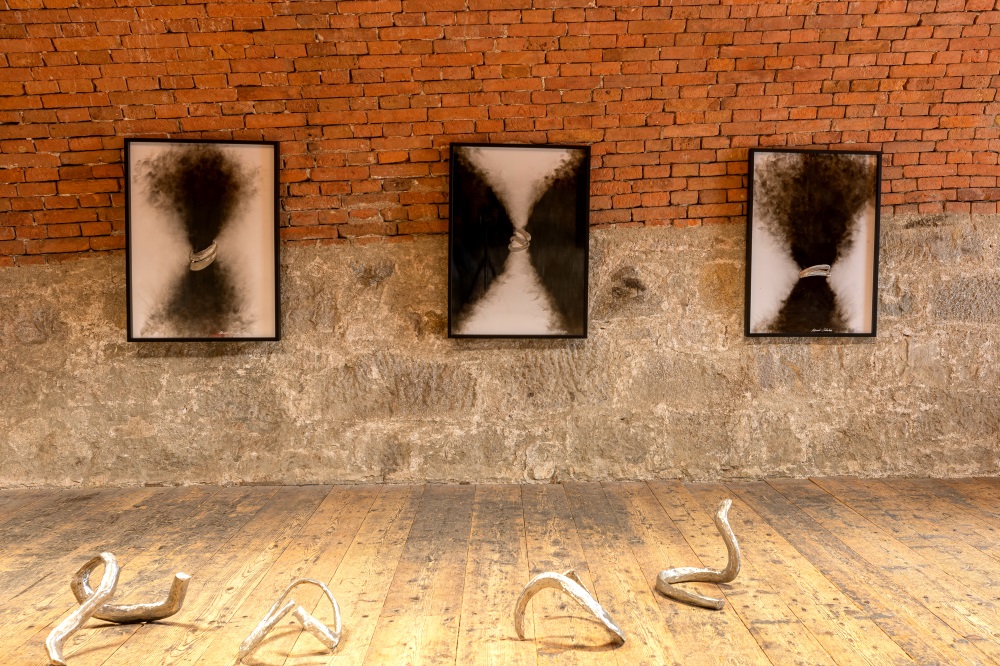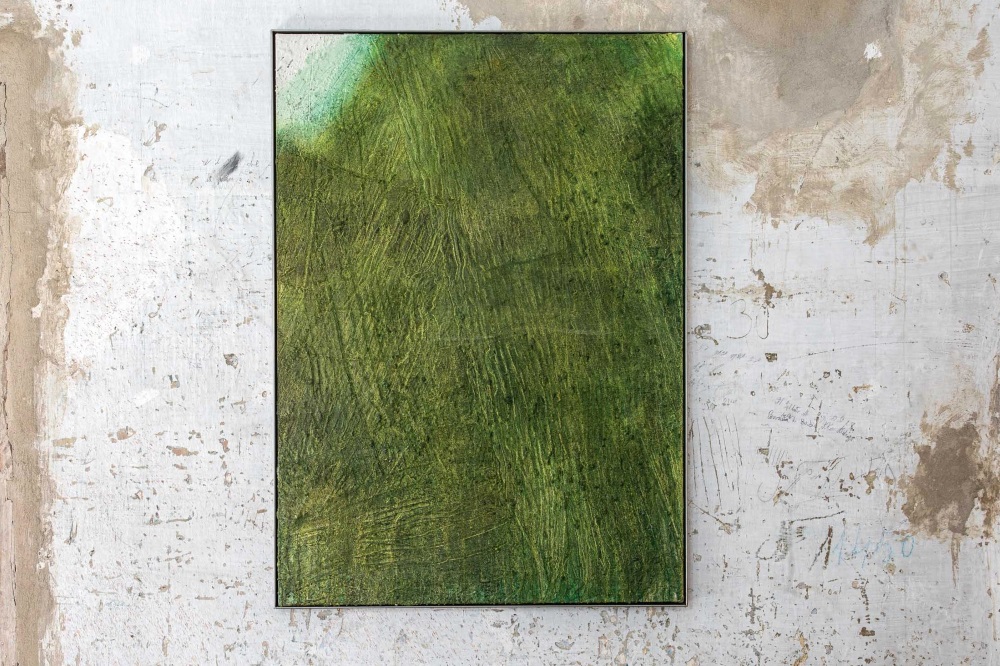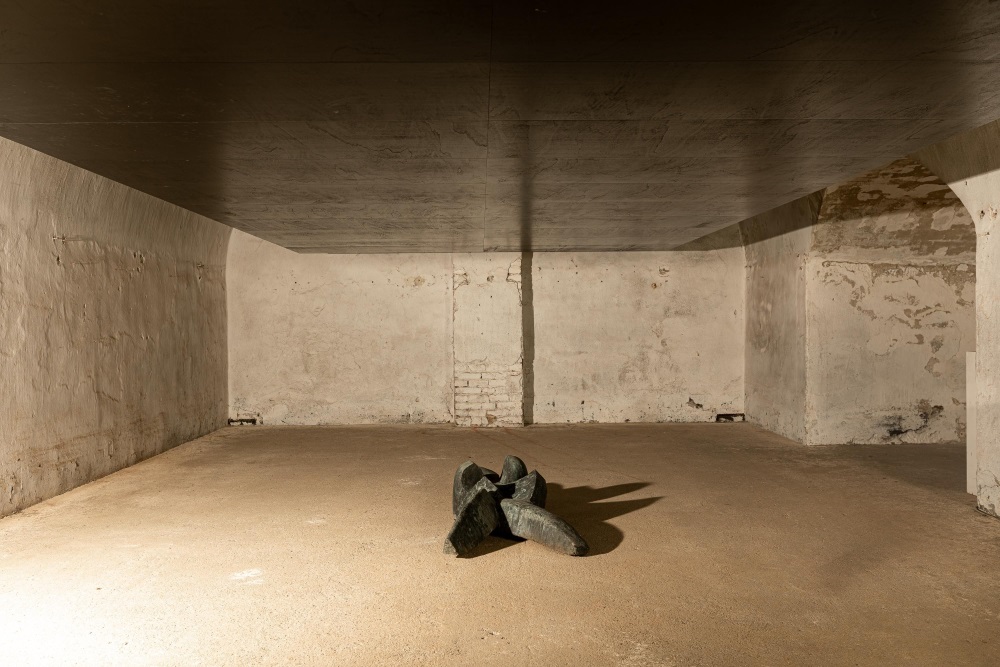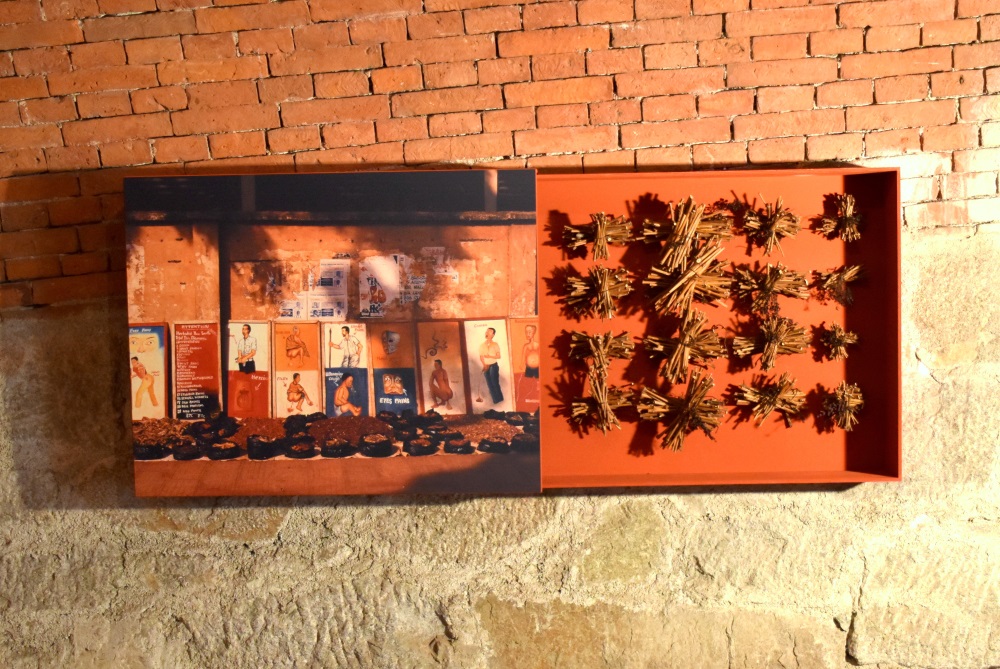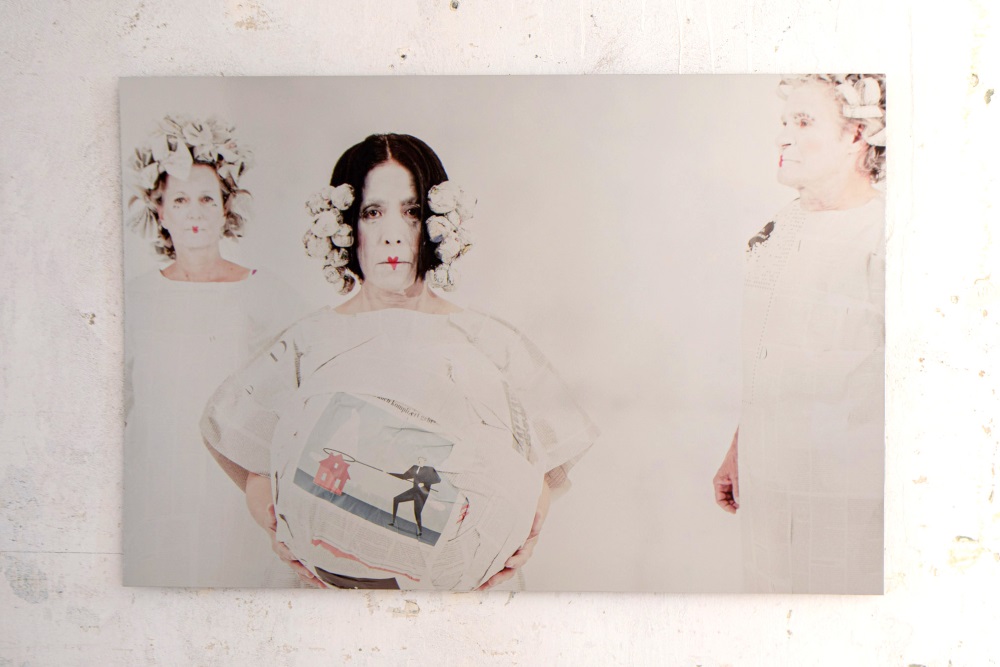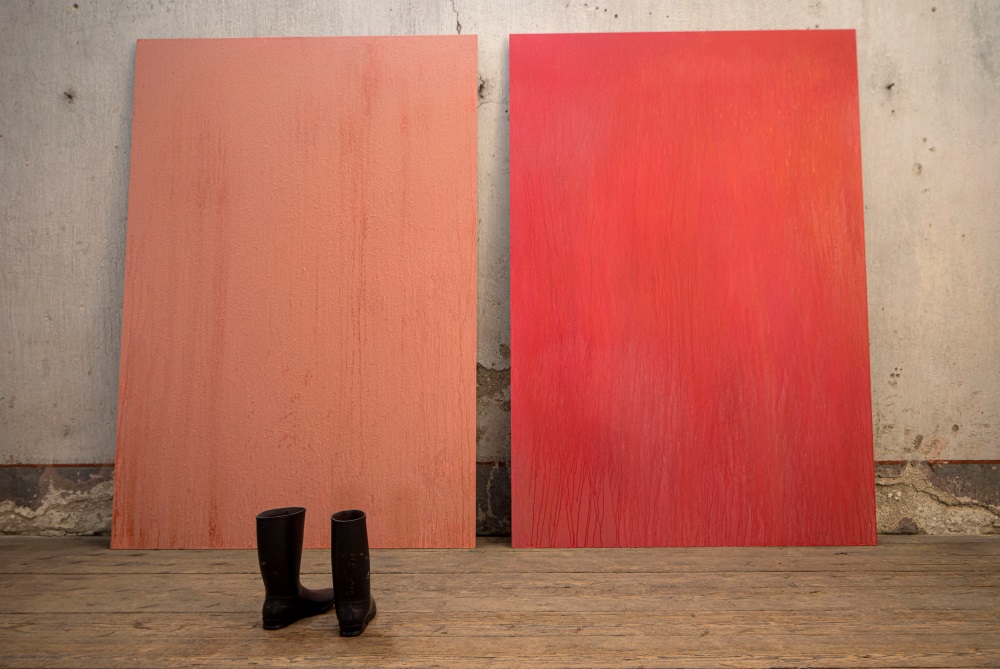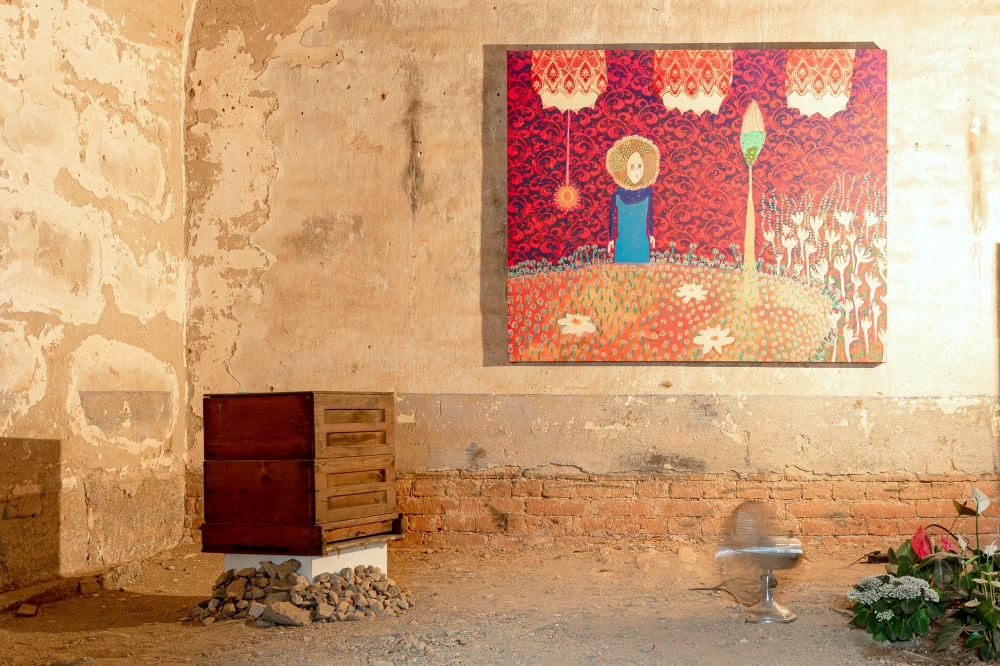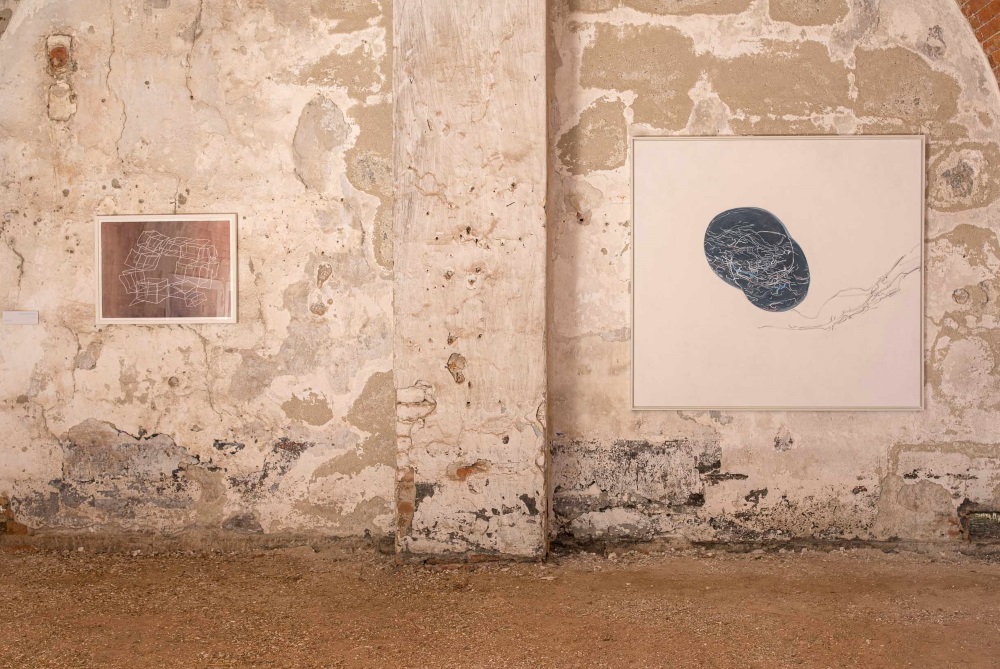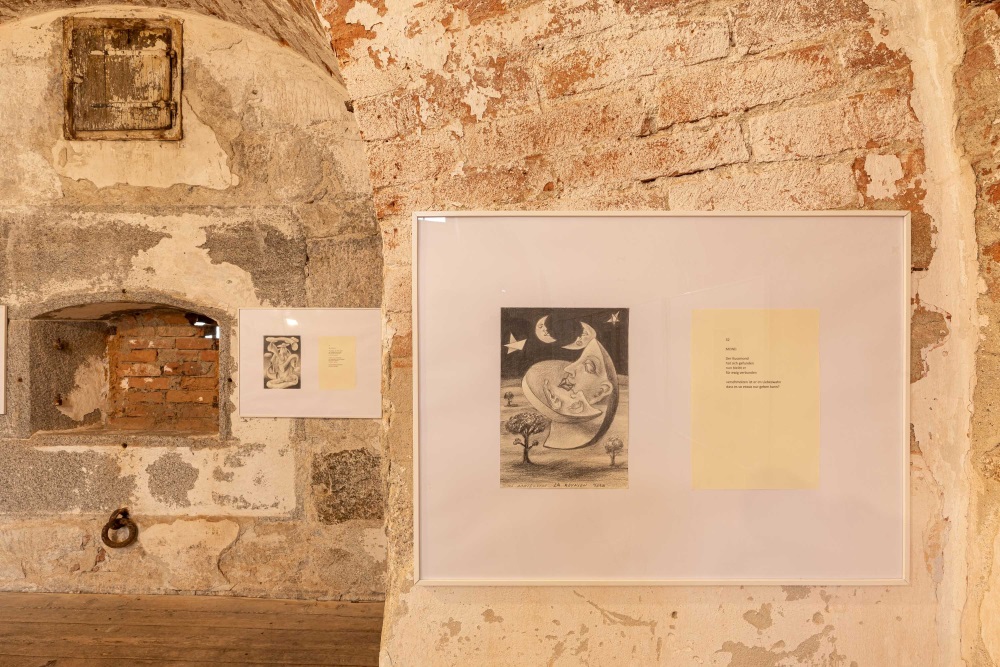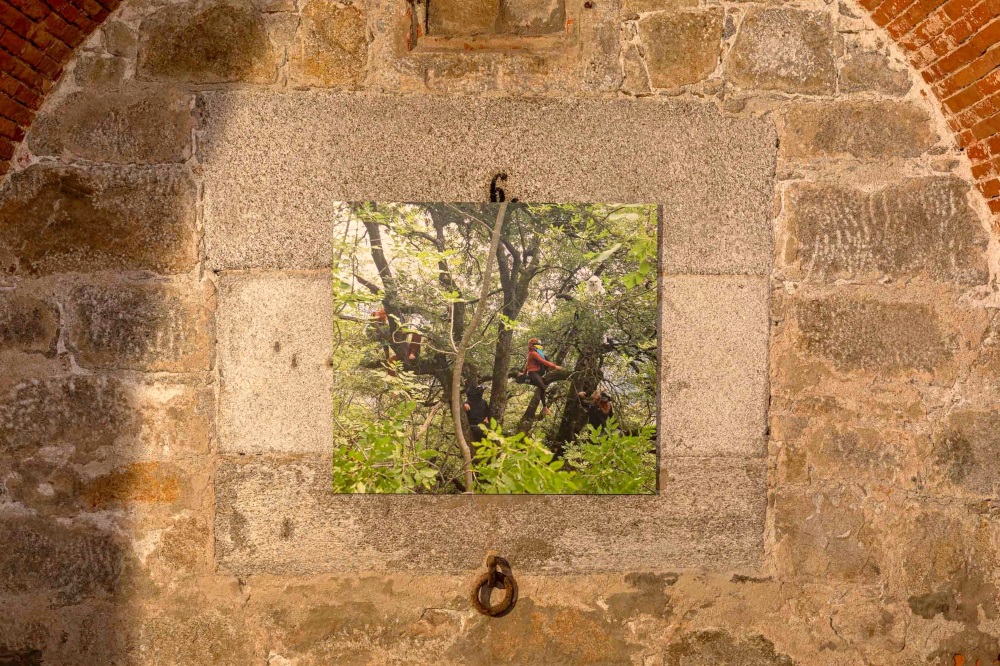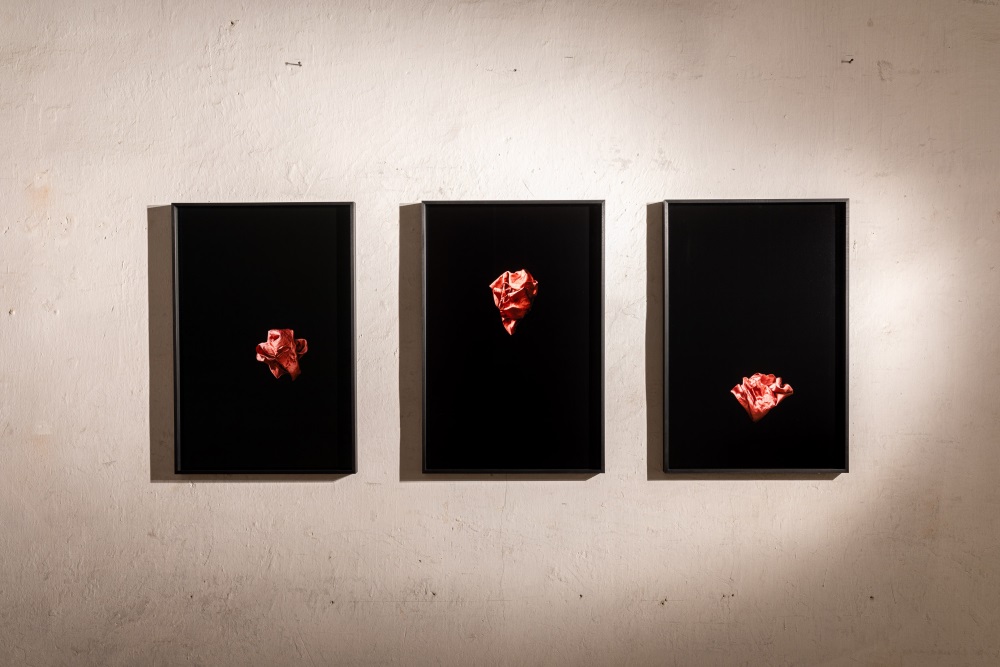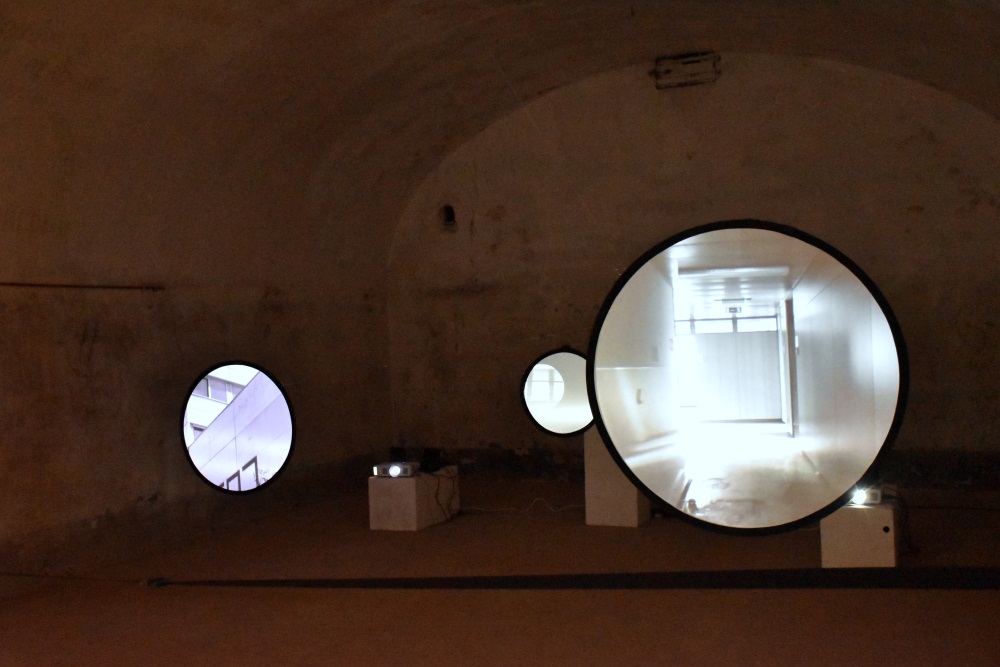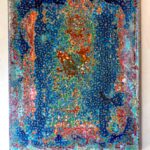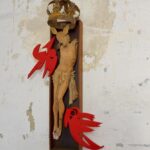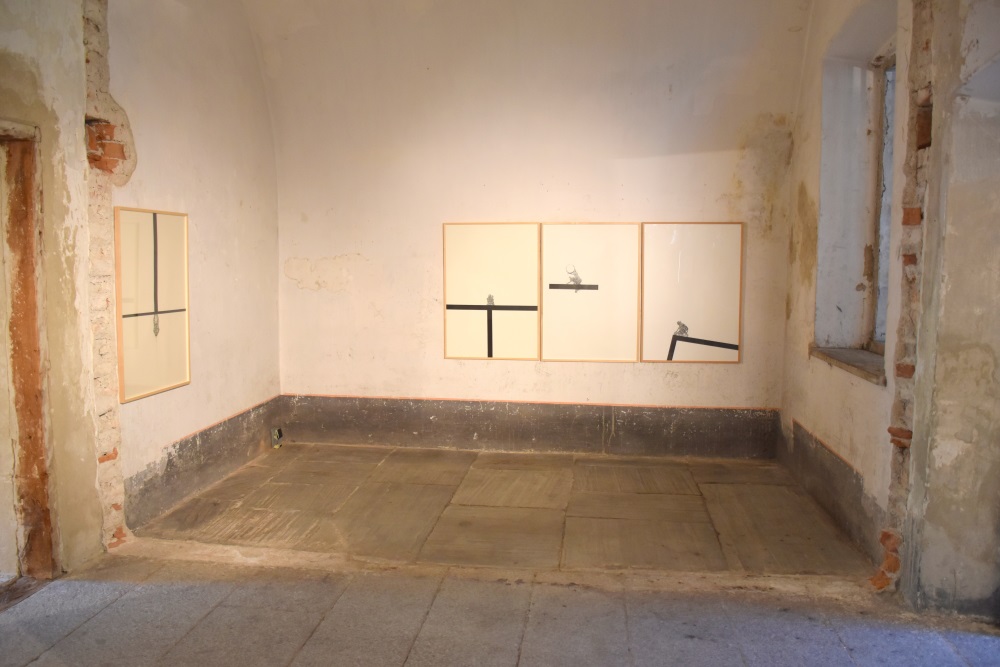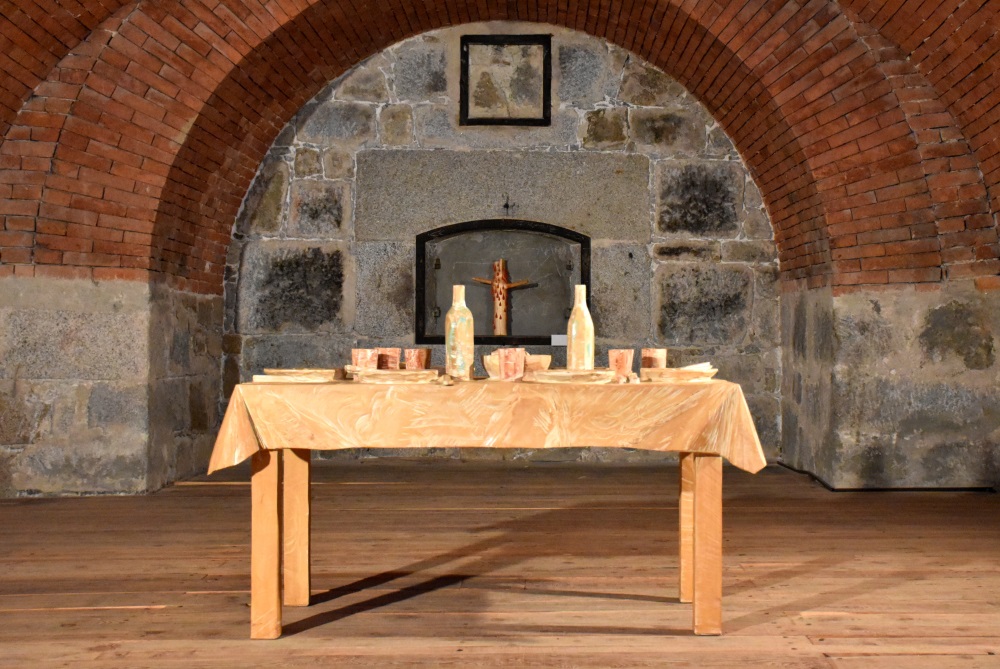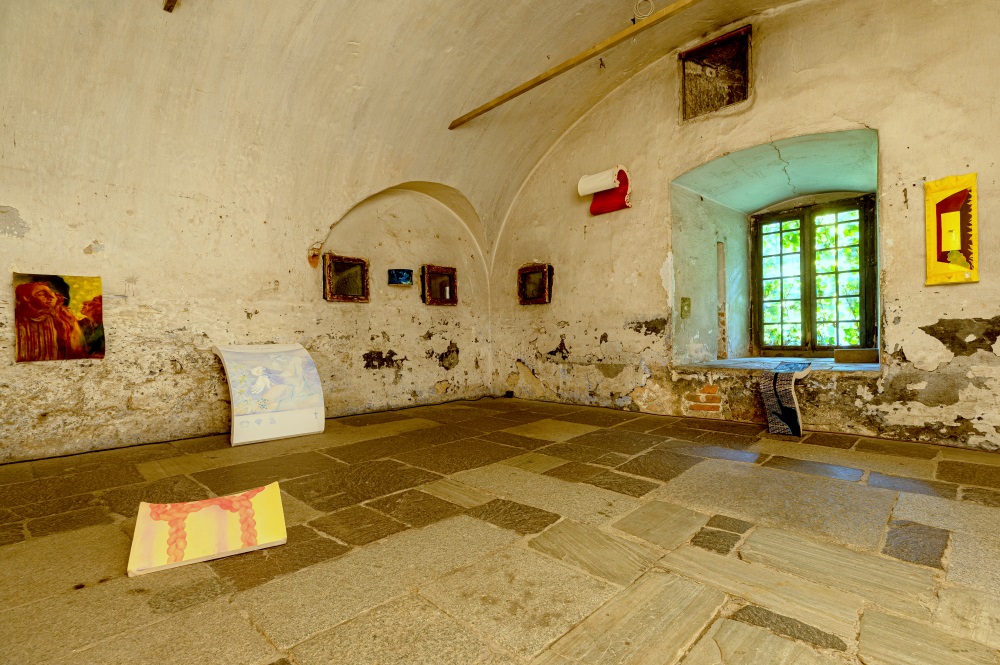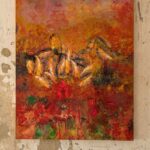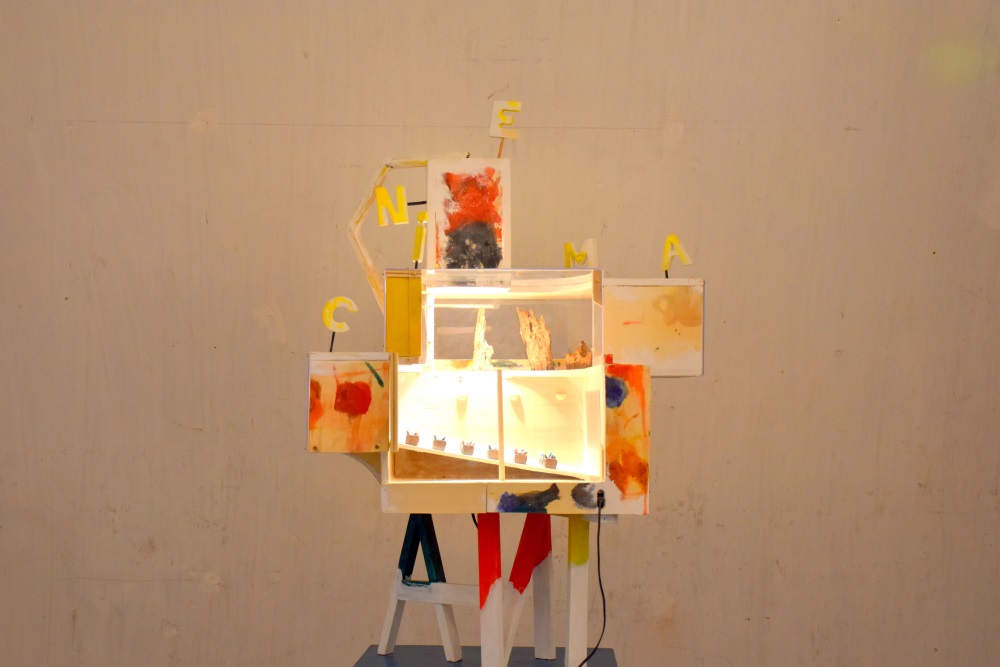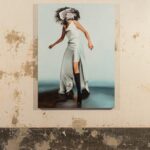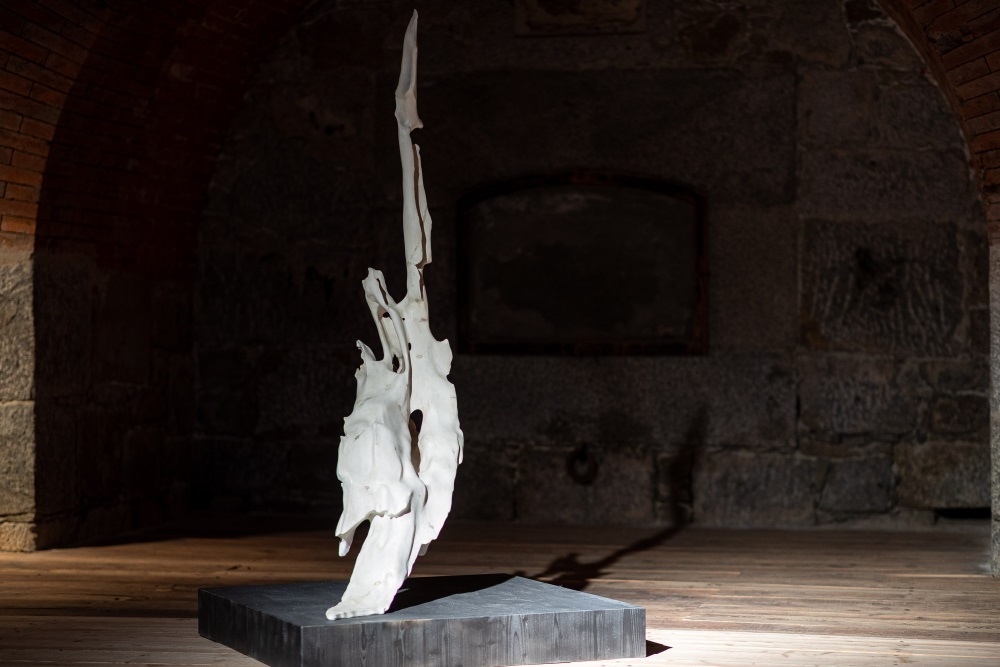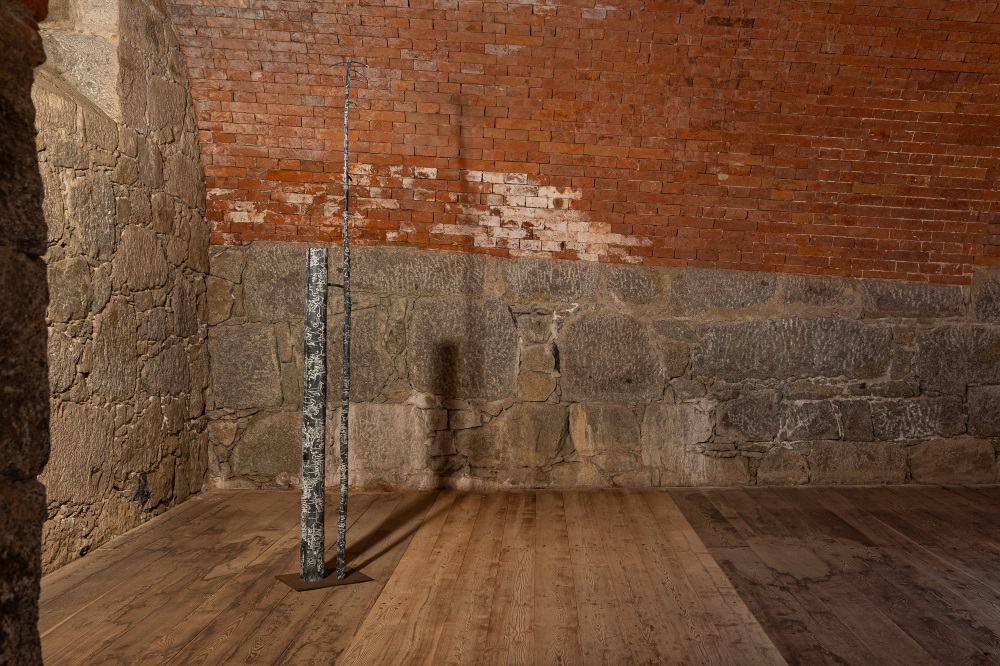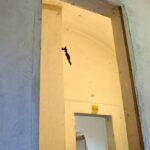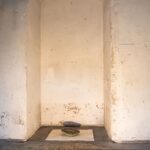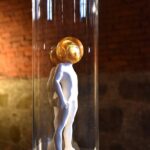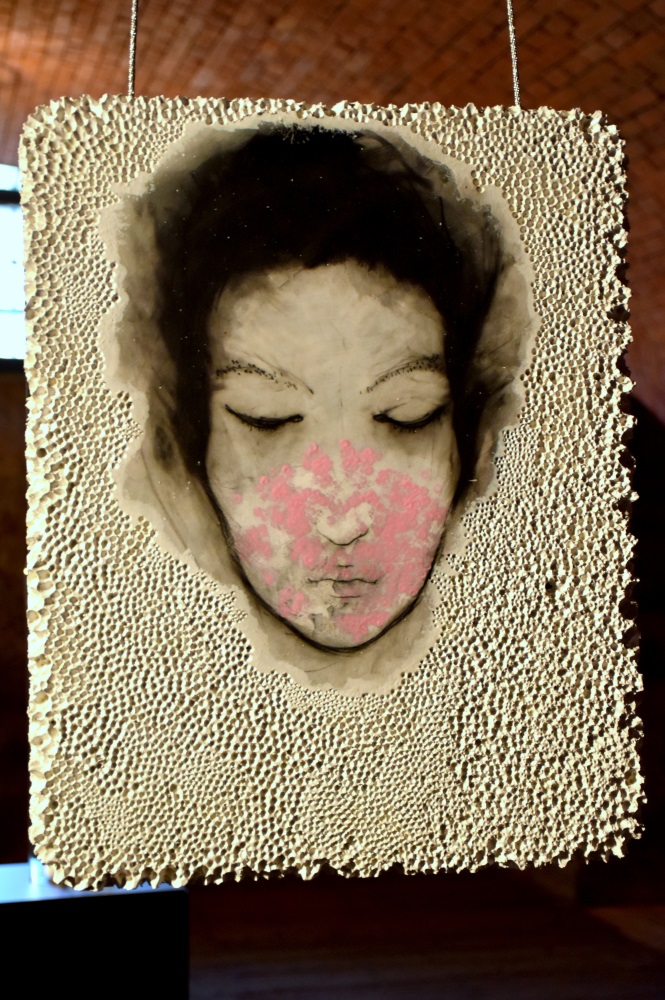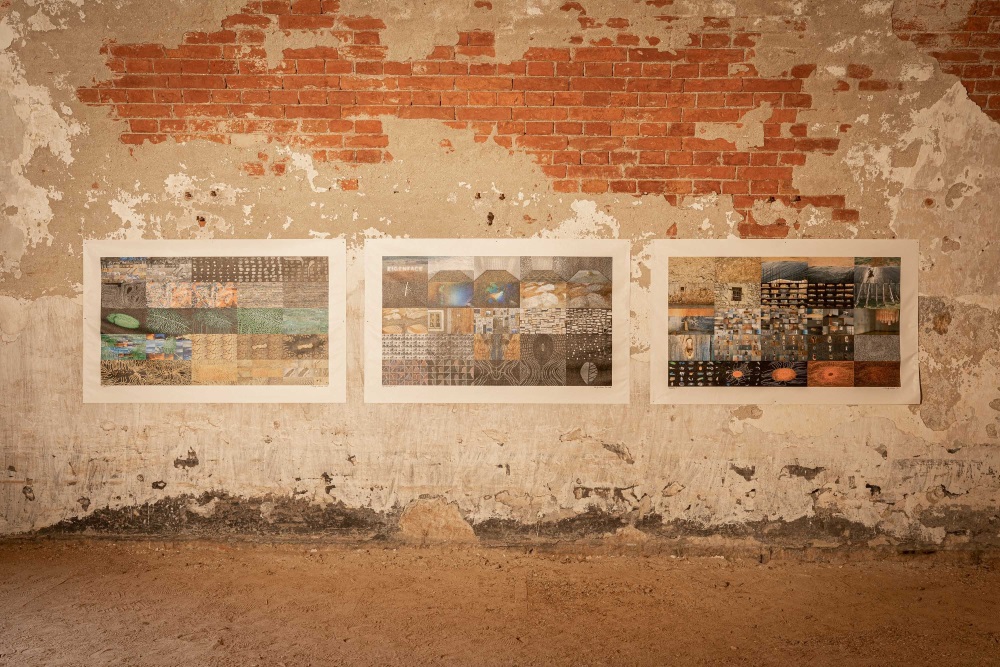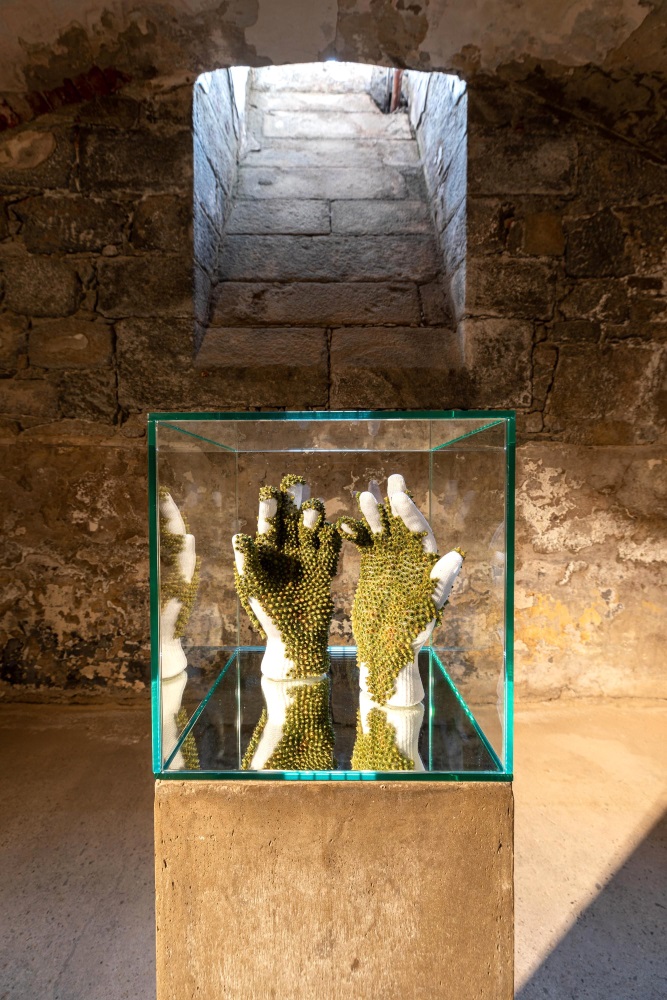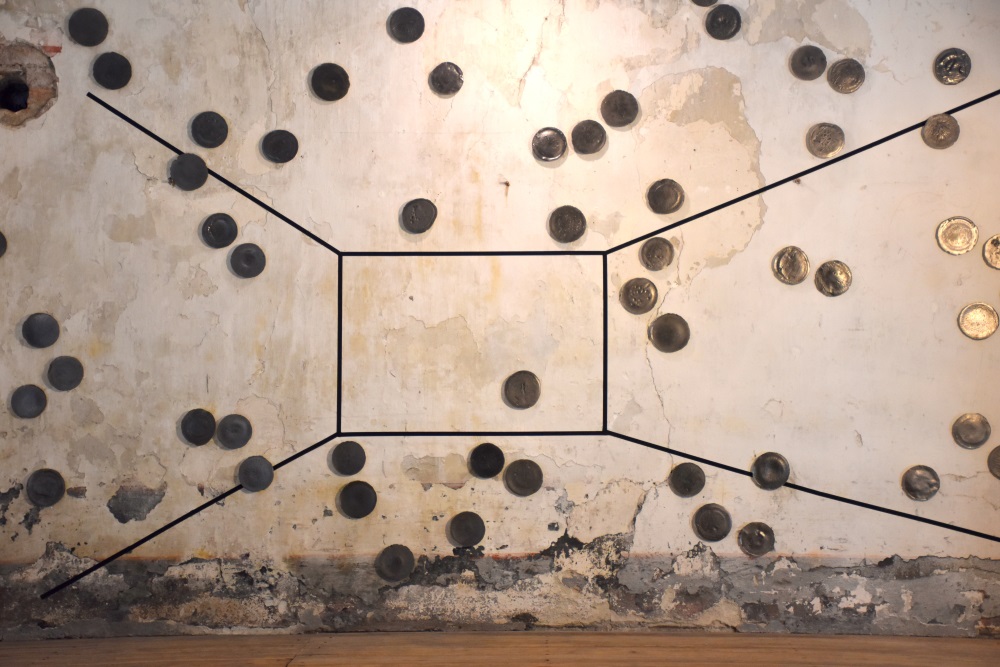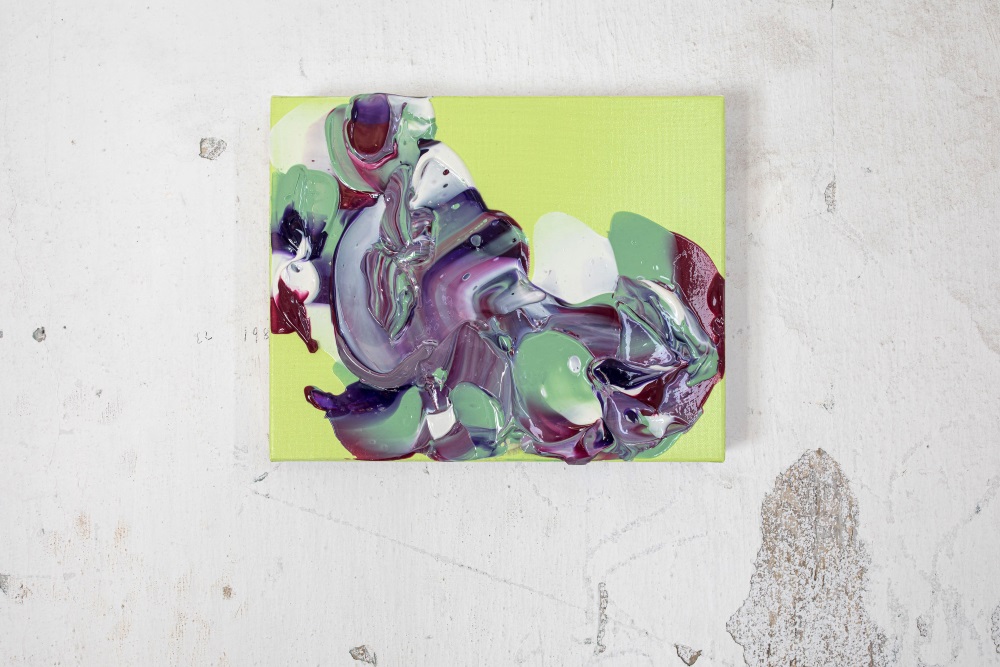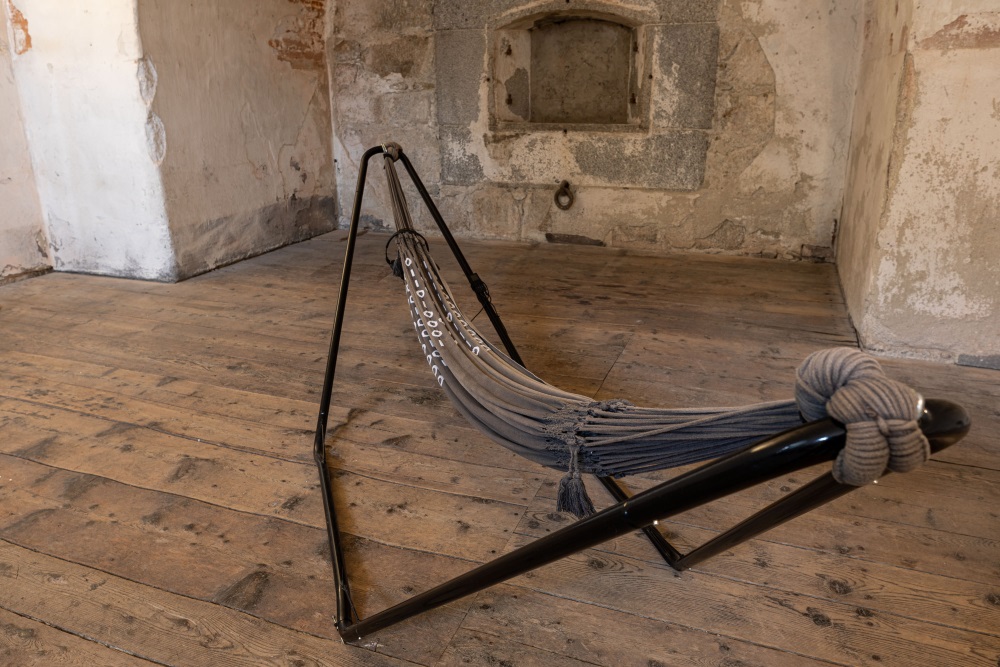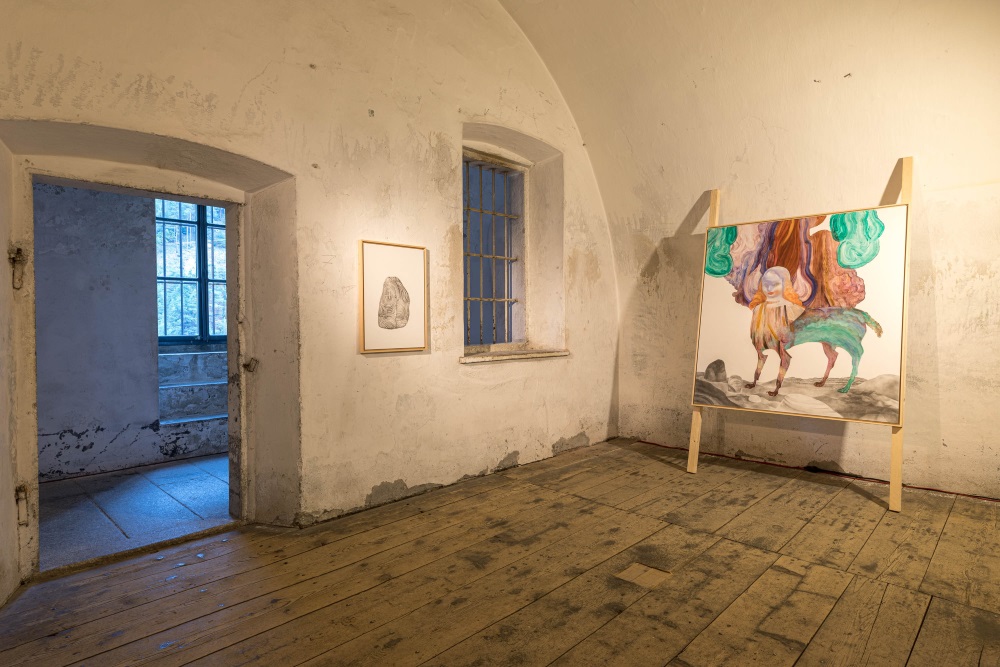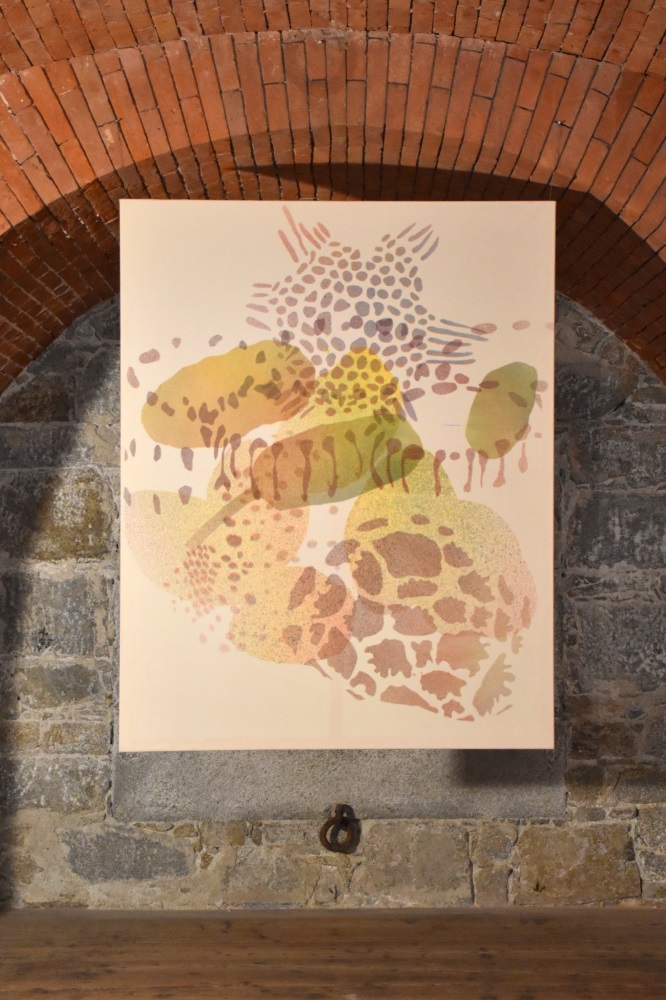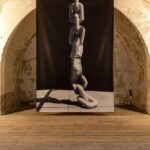LOCKOUT
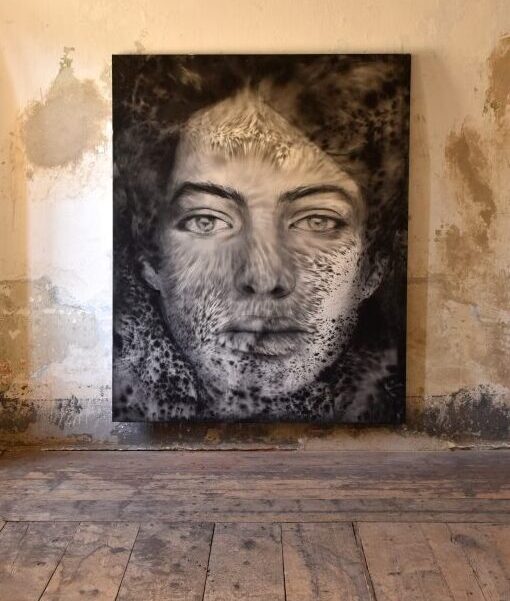
Online exhibition
In the middle of the second lockdown, which also forced the museums to close again, the exhibition LOCKOUT goes online. The works of the almost 50 artists, who show their very personal perspective on the lockdown, can be experienced virtually here. In addition, all interviews by curator Heinrich Schwazer that appeared in the Corona Gallery of the daily newspaper “Tageszeitung“ can be read here.
As soon as the fortress is allowed to open its doors to visitors again, the exhibition can be seen until the 30th of December 2020.
Unsichtbare Grenze
Gino Alberti
This charcoal drawing was created at the end of last year, shortly before the outbreak of coronavirus. In a certain way, the work already anticipated a social development connected to the pandemic. Reason being that the starting point for the creation of this work was the concept of border. The questions that now arise are of existential, metaphysical and symbolic nature. The current corona crisis is teaching a large part of mankind what limits and restrictions truly mean. Even if the virus does not stop at borders, we are forced to create an imaginary border through physical distance.
Today‘s digital means of communication enable us to do part of our job from home during times of partial or total lockdown. In doing so, they create the illusion that borders are easily overcome and that proximity is just one click away. Our body, the source of our emotions and thoughts, is not an emotionless computer that can be easily hidden in the back of our closet. As humans, we need physical and emotional closeness to survive.
Unter der Maske
AliPaloma
The project Beneath the Mask explores how the currently necessary face masks impact human communication and social interaction. A large part of human communication is non-verbal and happens via facial expressions, gestures and postures. “Our minds light on the face like butterflies on a flower, for it gives us a priceless flow of information” writes Daniel McNeill in his book “The Face“, 1999. Face masks cover an important source of information in the face, increasing social distance between people.
Ohne Titel
Katrin Böge
In Europe alone, more than 280 million people were cut off from external reality by the imposed lockdown in March 2020 and suddenly had to limit themselves to living in their own homes and their core
environment. This circumstance changed the perception of the outside world like never before. The works revolve around the question of how the human being as an individual feels his own isolation and, parallel to this, the outside world, which is maintained by a connection that remains abstract. Through the medium of the transparent glass pane and the superimposition of different snapshots, the structure of space and
time is distorted. In this way the artist succeeds in picking up these divergences on several levels. Like a window, the glass breaks open the wall between the observer and the observed and allows to have insight into a space that moves between the inside of the figure and the outside perception of the observer, yet seems to stand still. One snapshot fades into the next and vanishes into a space that remains static.
Ohne Titel
Robert Bosisio
This portrait shows an anonymous, but recognizably Asian person. In a large format, noticeable as black and white, but held in complementary green-red combinations, enveloped in blurred and light-dark tones, it creates a certain astonished melancholy. It was important to me to embody the theme of human beings at this time.
Collage
Eduard Habicher
This is a group of works created by applying smoke on cardboard and using elements made of moulded and modelled stainless steel. This smoke, dense, black and opaque in some places, but foggy and transparent in others, becomes a metaphor of life: trying to hold on to the smoke, trying to hold on to it, is like trying to hold on to time itself, or a happy moment, the fleeting moment. He evokes certainties that smoke, the life that changes everything... the “whole” in constant change. And yet we persist in our attempts to “grasp”.
Chips from life
Eduard Habicher
Small structural steel beams IPE are rolled up like wood shavings and set themselves in motion with the slightest impact. Others, on the other hand, are made of stainless steel and sway in precarious balance. Stability and strength, caused by solid and heavy material, are dissolved in a playful and ironic way: we want to take ourselves a little less serious and let the circumstances that are coming up with greater ease and a smile on our faces. It is clear that these considerations are not only valid for the Corona-Virus time but are very general.
flu(ch)t
Heinz Innerhofer
Never before has it been so easy to know so much. Just… Who’s lying? Who is telling the truth? Is it even possible to verify a message? Has it always been like this? Knowledge of the world is becoming a matter of faith. What source can be trusted? And like the keepers of all those only true religions, those who preach information insist on being omniscient.
Dies ist kein Virus
aus der Serie Invisible Worlds
Brigitte Mahlknecht
That knowledge also spreads epidemically and, like a disease, can best be controlled by isolating the first infected people as quickly as possible, – I read in an article about sea lions that you want to keep from eating too much salmon on California‘s coast.
Diskrete Räume
Brigitte Mahlknecht
Waltz for an Abandoned Building...
Video intervention with a composition by Marcos Rondon after Dmitri Dmitrijewitsch Shostakowitsch
Sissa Micheli
Using indoor and outdoor shots of an empty building and site, the artist documents a strong feeling of isolation. Horizontal and vertical tracking shots scan the architectural details of an immediately tangible city under renovation on photo and film reflectors. The choreography of the pictures is accompanied by Shostakovich‘s waltz No. 2, which was specially rearranged by the sound artist Marcos Rondon. The noise of the environment is acoustically captured and lets the room and its viewers vibrate as a resonance body for current changes.
Waltz for an Abandoned Building...
Video intervention with a composition by Marcos Rondon after Dmitri Dmitrijewitsch Shostakowitsch
Sissa Micheli
Using indoor and outdoor shots of an empty building and site, the artist documents a strong feeling of isolation. Horizontal and vertical tracking shots scan the architectural details of an immediately tangible city under renovation on photo and film reflectors. The choreography of the pictures is accompanied by Shostakovich‘s waltz No. 2, which was specially rearranged by the sound artist Marcos Rondon. The noise of the environment is acoustically captured and lets the room and its viewers vibrate as a resonance body for current changes.
. = - (point = line)
Sound installation 2020, 73’ 40’’
Thomas Riess
In our current view, time is measured and perceived as constantly linear. However, it is subjectively variable. Especially during the
lockdown, time acquired a new quality for many. This sound installation metaphorically deals with the fiction of the standstill of time. It is based on the stop, or more precisely on the “hanging” of a running audio CD, a time-acoustic ready-made, found auditory. According to the chaos principle, the sound fragments, which sometimes flicker quieter and sometimes louder, repeatedly revitalise the zero point of an acoustic time sequence – absolutely unsystematic without regularity and order. Like “frozen” points in time, these fragments poetically depict the stagnation of the temporal-linear
system. The sound document was only slightly modified, that is “acoustically
cleaned” and changed to a spherical sound image.
Caul – Eigenface – Squint: a video trilogy
Berty Skuber
A study or reportage that hinges on the places in which I live, or think I live, both physically and mentally. Real places, imagined places, places for concentration… places which constitute a home – Caul began in 2019 with a radical change of a landscape. Eigenface developed before and during the Corona crisis. Squint entirely in the course of the crisis. The way of seeing things changes, the way the work approaches them, the mode of imagination… from the reality of real places, to the reality of imagined places.
unantastbar
Lois Steger
Agrimonia eupatoria is an old European medicinal plant. It is considered to be magical and wizardly. The Greek physician Dioscurides used it in
the first century to treat difficult-to-heal ulcers and “mental weakness”. The positive effect of agrimony on protective incenses against evil powers, enchantments, black magic and negative influences is firmly anchored in popular belief. Drunk as tea, it has a slightly anaesthetic effect. After drinking it, it is said, one sleeps like a dead person. As an incense Odermenning spreads a pleasant herbaceous and spicy scent. It has a cleansing, balancing and protective effect and helps with imbalance, restlessness and stress.
moll
Stefan Tschurtschenthaler
The eighty-part installation moll was not explicitly conceived for the currently most topical theme worldwide. Nevertheless, in terms of materials, form and expression it fits seamlessly into the current corona problem. Here, the material wax is seen as a carrier of memory and conservator of stories, and the wafer-thinly applied surface of graphite is seen as symbolic of writing and recording what has been experienced and suffered.
The individual round forms, each of which differs slightly from the others in its surface structure, are representative of the many individually experienced tales of woe of our time. The title of the installation moll, borrowed from music, is used as a bridge between the level of perception and feeling. This key, which is often described as dark, gloomy and bleak, can, in combination with melody leading, rhythm and tempo, put into a melancholic, thoughtful state.
According to the current sense of time.
LETHE
Maria Walcher
What is the role of “forgetting” in our society? How is the aspect of forgetting approached in particular by the field of cultural theory and literature and which associations are there in the context of dementia? In a series of works Maria Walcher approaches the topic, letting the different perspectives flow into each other and create their own narrative. Here we find two of them.
LETHE. Binär
“Ob ein Mensch Erfahrungen machen kann, ist in letzter Instanz davon abhängig, wie er vergißt.” (Whether a person can gain experience, depends on the last resort on how he forgets.) correspondence: Theodor Adorno – Walter Benjamin. White on gray, embroidered in digital code on a hammock, an analog note. Another riddle of history, which should be explored or just decoration?
LETHE. Symposium
A “staged symposium”, one voice moving into the other, creating a fictional dialogue that interweaves various aspects of “forgetting”.
Sphinx
Sara Welponer
The Sphinx, mythological figure that has appeared in the Mediterranean area since the Neolithic, is the guardian of the threshold and a liminal figure between life and death. In Greek myth, she lives in remote places and tests travelers by exposing them to riddles. Only those who can answer will be let through.
Stèle
Sara Welponer
The motifs reproduced on Stèle comes from the stones that make up the burial chamber of the Cairn of Gavrinis (Brittany), a megalithic monument from the Neolithic period: concentric circles, spirals and semicircles – often interpreted as “shields” (= protection). However, these motifs and patterns are also reminiscent of a labyrinth, place of loss and confusion.
Insel
Sara Welponer
A cumulus cloud appears on the horizon, signaling the presence of land after a long journey on the open sea. An island. Hope or exile?

